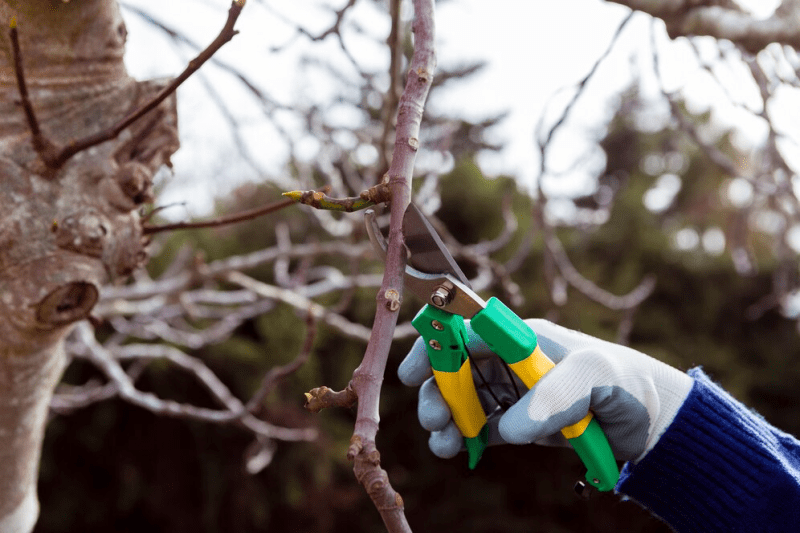
As summer approaches, so does the anticipation of warmer weather, longer days, and outdoor activities. However, along with the joys of summer comes the potential for severe weather, including thunderstorms, hurricanes, and tornadoes. To ensure your home is prepared to weather the storm, it’s essential to undertake some key maintenance tasks. Here are eight essential home maintenance tasks to help you prepare for summer storms:
1. Inspect and Clean Gutters
One of the most critical tasks in storm preparation is to inspect and clean your gutters. Clogged gutters can lead to water overflow, which can cause damage to your roof, siding, and foundation. Remove any debris such as leaves, twigs, and dirt from the gutters and downspouts to ensure proper water drainage during heavy rainfall. Additionally, consider installing rain chains for gutters, which not only enhances the aesthetic appeal of your home but also helps to efficiently direct water away from your foundation, preventing water buildup and potential flooding.

2. Check Roof Shingles
Your roof is your home’s first line of defense against the elements, so it’s crucial to inspect it for any damage or missing shingles. Loose or damaged shingles can allow water to seep into your home, leading to leaks and water damage during storms. Replace any damaged or missing shingles promptly to maintain the integrity of your roof.
Fireproof roof shingles, designed primarily to withstand fire hazards, also offer considerable benefits in preparing for summer storms. Their durability ensures they can withstand high winds, hail, and flying debris, reducing the risk of damage during storms. Additionally, their enhanced water resistance helps prevent leaks and water damage, common occurrences in heavy summer rainfall.
3. Trim Trees and Shrubs

Overgrown trees and shrubs can pose a significant risk to your home during storms, as falling branches can cause damage to your property. Trim back any branches that are close to your home, power lines, or other structures to prevent them from becoming projectiles during high winds. Additionally, removing dead or diseased trees can help reduce the risk of them falling during storms.
4. Secure Outdoor Items
In addition to securing outdoor items, it’s essential to know how to use self drilling screws effectively. Take the time to anchor down patio furniture, grills, and potted plants using self-drilling screws to prevent them from being blown away by strong winds. These screws provide a secure hold and can be easily installed without the need for pre-drilling, making them ideal for quick and effective outdoor securing during storm preparation. Additionally, consider storing any lightweight or loose items in a secure location such as a garage or shed until the storm has passed to further minimize the risk of damage or loss.
5. Inspect Windows and Doors

Check the seals and caulking around windows and doors for any gaps or cracks that could allow water to enter your home. Properly sealing windows and doors can help prevent water intrusion and drafts during storms. Consider installing storm shutters or plywood panels to protect windows from flying debris and high winds.
6. Test Sump Pump and Backup Generator
If your home is equipped with a sump pump or backup generator, it’s essential to test them before the storm season begins. Ensure that your sump pump is in good working condition and able to handle excess water in the event of heavy rainfall or flooding. Likewise, test your backup generator to ensure it will provide power to essential appliances and systems during power outages.
7. Inspect Basement and Foundation

Inspect your basement and foundation for any signs of water damage, such as dampness, mold, or mildew. This step is crucial in ensuring the structural integrity of your home and preventing potential water-related issues during summer storms. The best way to waterproof a basement is to seal any cracks or gaps in the foundation, which can serve as entry points for water infiltration.
Additionally, consider installing a sump pump or interior drainage system to effectively manage excess water and keep your basement dry, especially during periods of heavy rainfall. These proactive measures will help protect your home from water damage and maintain a safe and dry environment throughout the storm season.
8. Create an Emergency Kit
As part of your storm preparedness plan, assemble an emergency kit containing essential supplies such as non-perishable food, water, flashlights, batteries, first aid supplies, and important documents. Keep your emergency kit in a designated location that is easily accessible in the event of a storm or other emergency.
Preparing Your Home for Summer Storms
By taking the time to complete these essential home maintenance tasks, you can help ensure that your home is prepared to withstand the rigors of summer storms. Remember to stay informed about weather forecasts and heed any warnings or advisories issued by local authorities. With proper preparation and planning, you can minimize the risk of damage to your home and keep your family safe during storm season.
Author Bio
Andrea Erickson is a freelance writer who loves sharing her knowledge and expertise in renovation and Interior Design. She lives in her hometown of Austin, Texas where she enjoys spending time with her husband and decorating with her children. Andrea’s work as a freelance writer can be found on Building Product Advisor, a construction industry resource site.








